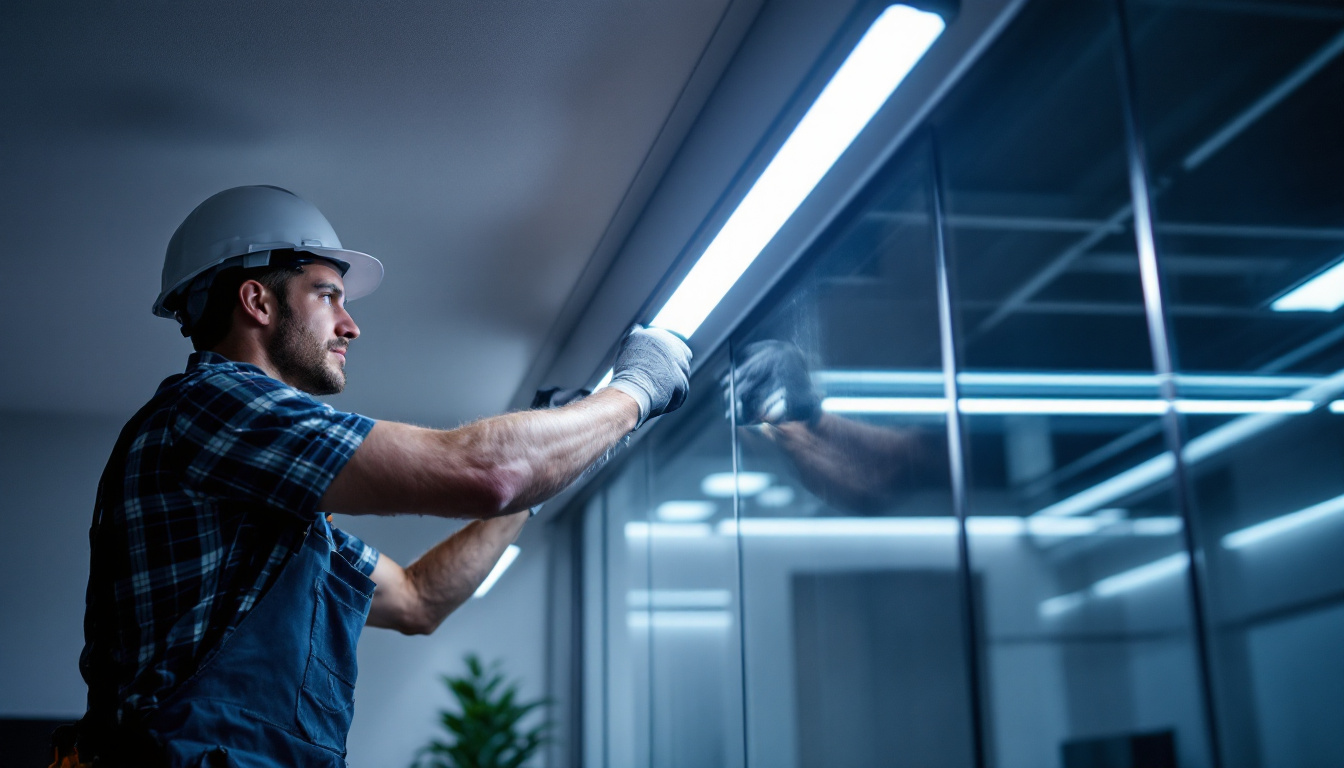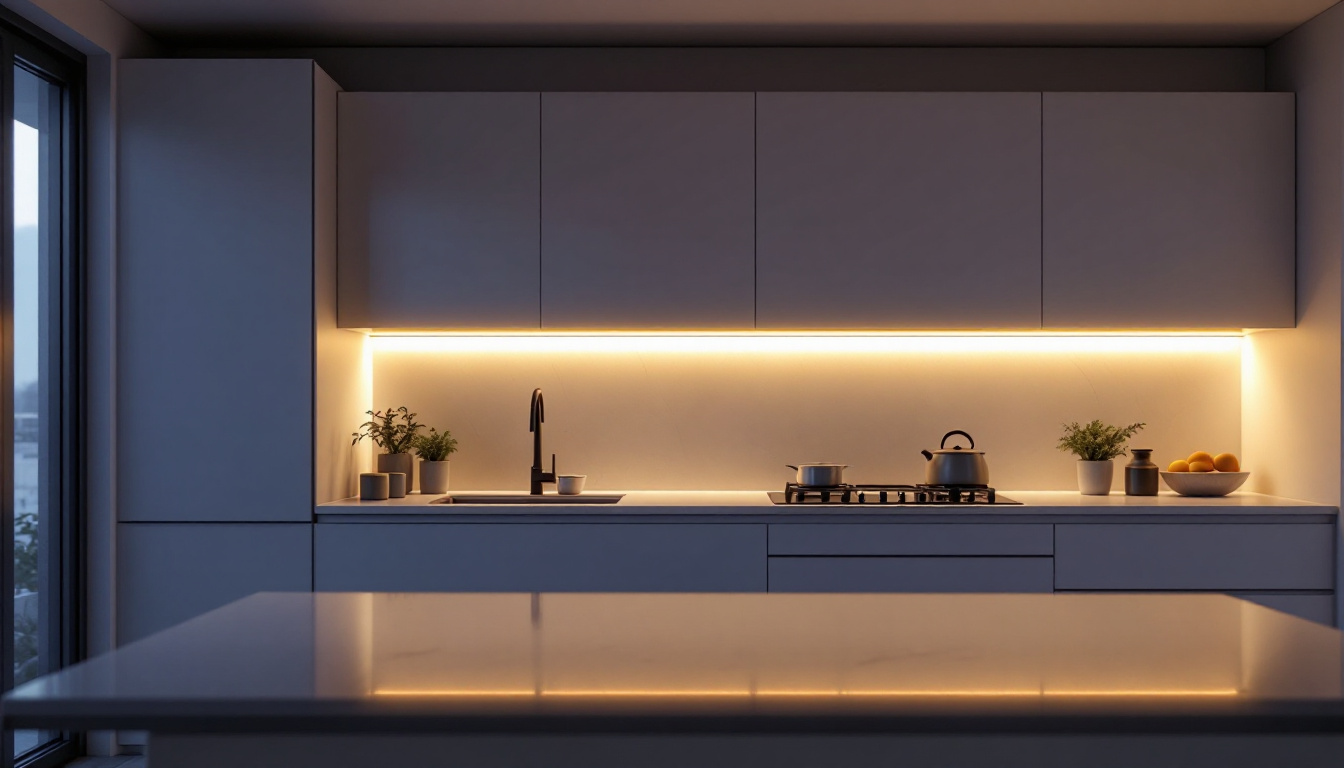
In the evolving world of lighting design, LED linear lights have emerged as a popular choice among contractors and designers alike. Their versatility, energy efficiency, and aesthetic appeal make them suitable for a variety of applications, from residential to commercial spaces. However, understanding the nuances of LED linear lights can be challenging. This article provides essential tips for lighting contractors to ensure successful installations and satisfied clients.
LED linear lights are elongated lighting fixtures that utilize light-emitting diodes (LEDs) to produce illumination. They come in various forms, including recessed, surface-mounted, and suspended models, making them adaptable to different environments and design needs. The technology behind these lights offers numerous advantages over traditional lighting solutions.
One of the most significant advantages of LED linear lights is their energy efficiency. Compared to incandescent or fluorescent lights, LEDs consume significantly less power while providing the same or even greater luminosity. This efficiency translates into lower energy bills for clients, making LED lights an attractive option for budget-conscious consumers.
Additionally, LED linear lights have a longer lifespan, often lasting up to 50,000 hours or more. This longevity reduces the frequency of replacements, which can be a considerable cost-saving factor for both contractors and clients. Furthermore, LEDs emit less heat than traditional bulbs, contributing to a cooler environment and reducing air conditioning costs. The reduced heat output also minimizes the risk of overheating, which can be a concern in tightly sealed or insulated spaces, ensuring both safety and comfort in any setting.
LED linear lights are incredibly versatile and can be used in a variety of settings. In commercial spaces, they are often found in offices, retail stores, and warehouses, providing bright, even illumination that enhances visibility and aesthetics. In residential settings, they can be used for task lighting in kitchens, accent lighting in living areas, or ambient lighting in hallways.
Moreover, the design flexibility of LED linear lights allows for creative installations, such as cove lighting, under-cabinet lighting, and even architectural lighting in outdoor spaces. This adaptability makes them a favorite choice among lighting designers and contractors. Their sleek profiles and modern aesthetics blend seamlessly with contemporary design trends, allowing them to enhance the overall ambiance of a space without overwhelming it. Additionally, the availability of various color temperatures—from warm white to cool daylight—enables users to customize the lighting to suit specific moods or activities, further expanding their utility in both personal and professional environments.
Proper installation is crucial for maximizing the benefits of LED linear lights. Here are some essential tips that contractors should consider during the installation process.
Before installation, it is vital to plan the layout carefully. Consider the purpose of the lighting, the desired ambiance, and the specific areas that require illumination. Creating a lighting plan that includes the placement of fixtures, their spacing, and the type of LED linear lights to be used will help ensure an effective lighting design.
Additionally, take into account the height of the ceiling and the dimensions of the space. For instance, in areas with high ceilings, longer linear fixtures may be necessary to provide adequate light distribution. Conversely, in smaller spaces, shorter fixtures or a combination of different lengths may be more appropriate. It’s also beneficial to consider the color temperature of the LED lights, as warmer tones can create a cozy atmosphere, while cooler tones are often more suitable for workspaces and kitchens. This attention to detail not only enhances the aesthetic appeal but also ensures that the lighting meets the functional needs of the space.
When installing LED linear lights, proper wiring and power supply are essential. Ensure that the electrical system can handle the load of the new fixtures, and consider using a dedicated circuit if necessary. It is also crucial to follow local electrical codes and regulations to ensure safety and compliance.
Additionally, consider the use of dimmers or smart controls to enhance the functionality of the lighting system. Dimming capabilities can provide flexibility in adjusting the light levels according to the time of day or specific activities, adding a layer of customization for the client. Furthermore, integrating smart technology can allow for remote control and automation, enabling users to schedule lighting based on their routines or even control it via smartphone apps. This modern approach not only improves convenience but also promotes energy efficiency, as users can easily turn off lights that are not in use, reducing unnecessary energy consumption. In this way, the installation of LED linear lights can be both a practical and an innovative solution for contemporary lighting needs.
Not all LED linear lights are created equal, and selecting the right fixtures for a project can significantly impact the overall outcome. Here are some factors to consider when choosing LED linear lights.
Color temperature is an essential aspect of lighting design, as it affects the mood and functionality of a space. LED linear lights are available in various color temperatures, typically ranging from warm white (2700K) to cool white (5000K). For residential applications, warmer tones are often preferred for their cozy ambiance, while cooler tones are suitable for commercial spaces that require a more energetic atmosphere.
Additionally, consider the Color Rendering Index (CRI) of the LED lights. A higher CRI (above 80) indicates that the light will render colors more accurately, which is particularly important in settings such as art galleries, retail stores, or kitchens where color perception is crucial. A CRI of 90 or above is often recommended for environments where color fidelity is paramount, allowing for a true representation of hues and shades, thus enhancing the overall aesthetic experience.
The design and finish of LED linear lights can also influence the overall aesthetic of a space. Contractors should consider the architectural style of the environment when selecting fixtures. Sleek, minimalist designs may work well in modern settings, while more decorative options may be appropriate for traditional spaces.
Moreover, the finish of the fixtures, whether matte, glossy, or metallic, can affect the light’s distribution and the overall look of the installation. It is essential to choose a finish that complements the surrounding decor while providing the desired lighting effect. For instance, a matte finish can help diffuse light more evenly, reducing glare, while a glossy finish might enhance brightness and create a more vibrant atmosphere. Additionally, the choice of materials—such as aluminum, glass, or plastic—can impact durability and maintenance, making it crucial to select fixtures that not only look good but also withstand the test of time in their intended environment.
Another critical factor to consider is the energy efficiency of LED linear lights. These fixtures are known for their low energy consumption compared to traditional lighting solutions, which can lead to significant cost savings over time. When selecting LED lights, look for products that are ENERGY STAR certified, as they meet strict efficiency guidelines and are designed to last longer, typically offering a lifespan of 25,000 hours or more. This longevity means fewer replacements and reduced waste, making LED linear lights an environmentally friendly choice.
Furthermore, consider the dimming capabilities of the fixtures. Many LED linear lights are compatible with dimmer switches, allowing for greater control over the brightness levels in a space. This feature can enhance energy savings by allowing users to adjust lighting according to their needs, whether for a bright, focused work environment or a softer, more relaxed setting. Understanding the balance between energy efficiency and functionality will help ensure that the selected lighting solution meets both practical and aesthetic demands.
Even though LED linear lights are known for their longevity and low maintenance, occasional issues may arise. Understanding how to troubleshoot common problems can save time and enhance client satisfaction.
One common issue with LED linear lights is flickering, which can occur due to poor connections, incompatible dimmers, or voltage fluctuations. Contractors should check all connections and ensure that the dimmer switch is rated for LED use. If the flickering persists, it may be necessary to consult the manufacturer for further assistance.
Another issue that may arise is uneven lighting or dark spots. This can often be attributed to improper spacing of fixtures or insufficient wattage. Re-evaluating the layout and adjusting the number of fixtures or their placement can help resolve this problem.
To ensure the longevity of LED linear lights, it is advisable to perform routine maintenance. This includes cleaning the fixtures regularly to remove dust and debris that can accumulate over time and affect light output. Using a soft, damp cloth is typically sufficient for cleaning, but ensure that the lights are turned off and cool before doing so.
Additionally, contractors should encourage clients to monitor the performance of their lighting systems. If any issues arise, addressing them promptly can prevent further complications and maintain the quality of illumination in the space.
LED linear lights offer a myriad of benefits for both contractors and clients, from energy efficiency to design flexibility. By understanding the intricacies of these fixtures, lighting contractors can enhance their expertise and provide exceptional service to their clients. Whether it’s planning the layout, selecting the right products, or troubleshooting issues, these quick tips can serve as a valuable resource in the ever-evolving field of lighting design.
As the demand for energy-efficient and aesthetically pleasing lighting solutions continues to grow, staying informed about the latest trends and technologies in LED linear lighting will empower contractors to deliver outstanding results. With careful planning and execution, LED linear lights can transform spaces and elevate the overall lighting experience for clients.
Ready to bring the benefits of LED linear lights to your next project? At LumenWholesale, we specialize in providing lighting contractors with the highest quality, spec-grade LED lighting solutions at unbeatable wholesale prices. Say goodbye to local distributor markups and hello to our extensive selection of reliable, high-performance lighting that meets the highest industry standards. Plus, with free shipping on bulk orders, you can enjoy premium lighting at the best value — without hidden fees or compromises. Elevate your lighting game and experience the perfect blend of quality, affordability, and convenience. Visit LumenWholesale now for Wholesale Lighting at the Best Value and transform your lighting projects today.

Discover expert-recommended best practices for installing thin under cabinet lighting in this comprehensive guide tailored for lighting contractors.

Discover the latest strategies and proven techniques for lighting contractors to effectively utilize Type T LED lamps.

Discover how temp light stringers can revolutionize your lighting installations by boosting efficiency and profitability.

Discover the transformative power of LED high bay lighting in modern construction projects.